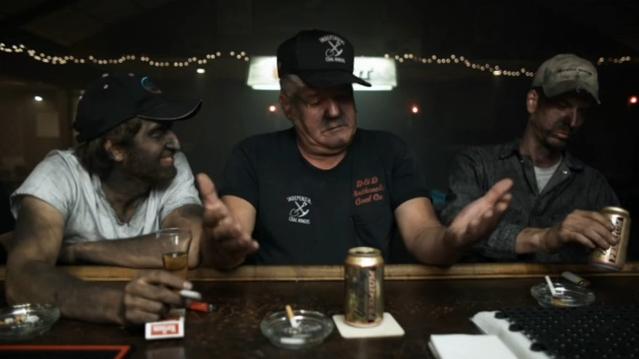 During national elections, Pennsylvania usually finds itself a swing state. And when candidates role through the mostly-rural area between PA’s two major cities of Philadelphia and Pittsburgh, they are courting votes in “the T zone” – named by pollsters for it’s letter ‘T’-like shape on a map. Apart from dairy and produce farming, another famous area profession is coal and gas mining. In fact, I recently screened the short feature film, Coal, from director David Rosfeld, centered on people who independently mine anthracite coal in and around Pottsville and Frackville. The sight of these men relaxing at a bar after their shift, covered in the dusty residue of the precious resource fueling most of the world’s power plants, is reminiscent of similar images seen in photographs, and later films, shot around this region over the past 150 years.
During national elections, Pennsylvania usually finds itself a swing state. And when candidates role through the mostly-rural area between PA’s two major cities of Philadelphia and Pittsburgh, they are courting votes in “the T zone” – named by pollsters for it’s letter ‘T’-like shape on a map. Apart from dairy and produce farming, another famous area profession is coal and gas mining. In fact, I recently screened the short feature film, Coal, from director David Rosfeld, centered on people who independently mine anthracite coal in and around Pottsville and Frackville. The sight of these men relaxing at a bar after their shift, covered in the dusty residue of the precious resource fueling most of the world’s power plants, is reminiscent of similar images seen in photographs, and later films, shot around this region over the past 150 years.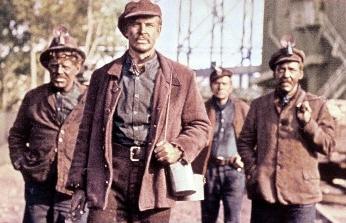 In 1970, Martin Ritt directed a film about the infamous 1876 chapter in PA’s anthracite coal mining history: the breaking of The Molly Maguires. This secret society of Irish-American miners violently protested harsh working conditions, but were infiltrated by a Pinkerton Agency detective, whose testimony got ten “Mollies” executed. The film was shot in the old mining company town of Eckley, in the heart of PA anthracite country, which had just gained independence from company ownership when cameras rolled in 1969. By the time of the Maguires, Eckley had over 1000 residents, many of them immigrant laborers from around Europe. South of Eckley, in PA farming country, some German-speaking immigrants had already settled in the Lancaster region, with an Amish lifestyle that’s hardly changed since the 19th century. Peter Weir’s 1985 film, Witness involves an Amish youth who sees a murder in Philadelphia, and the subsequent flight
In 1970, Martin Ritt directed a film about the infamous 1876 chapter in PA’s anthracite coal mining history: the breaking of The Molly Maguires. This secret society of Irish-American miners violently protested harsh working conditions, but were infiltrated by a Pinkerton Agency detective, whose testimony got ten “Mollies” executed. The film was shot in the old mining company town of Eckley, in the heart of PA anthracite country, which had just gained independence from company ownership when cameras rolled in 1969. By the time of the Maguires, Eckley had over 1000 residents, many of them immigrant laborers from around Europe. South of Eckley, in PA farming country, some German-speaking immigrants had already settled in the Lancaster region, with an Amish lifestyle that’s hardly changed since the 19th century. Peter Weir’s 1985 film, Witness involves an Amish youth who sees a murder in Philadelphia, and the subsequent flight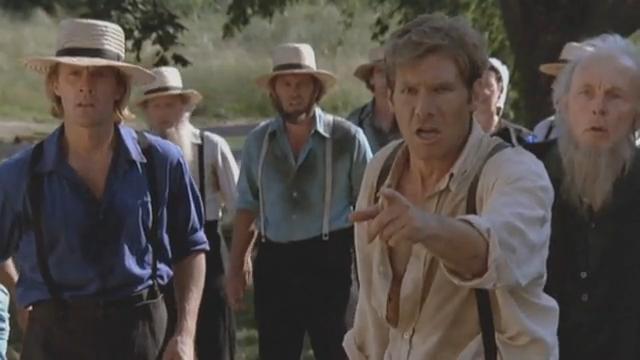 of policeman, John Book to the boy’s community – followed soon by the killers. Though the Lapp farm scenes were shot on-location in Strasburg, Book’s confrontation with bullying city folk is in the Lancaster village of Intercourse. Looking on from a buggy as his Amish friend is abused, Book moves to intercede, but the old man beside him chastises, “it’s not our way.” Proceeding anyway, Book replies, “but, it’s my way,” then breaks a bully’s nose. The hard struggle to ignore the demons of his lesser nature is fought by steelworker, Nikanor “Nick” Chevotarevich in the climactic scene of The Deer Hunter. A strung out Nick sits in a Saigon backroom pointing a pistol at his own temple – mimicking the tortured games of Russian roulette he endured as a Vietnam POW – while his childhood
of policeman, John Book to the boy’s community – followed soon by the killers. Though the Lapp farm scenes were shot on-location in Strasburg, Book’s confrontation with bullying city folk is in the Lancaster village of Intercourse. Looking on from a buggy as his Amish friend is abused, Book moves to intercede, but the old man beside him chastises, “it’s not our way.” Proceeding anyway, Book replies, “but, it’s my way,” then breaks a bully’s nose. The hard struggle to ignore the demons of his lesser nature is fought by steelworker, Nikanor “Nick” Chevotarevich in the climactic scene of The Deer Hunter. A strung out Nick sits in a Saigon backroom pointing a pistol at his own temple – mimicking the tortured games of Russian roulette he endured as a Vietnam POW – while his childhood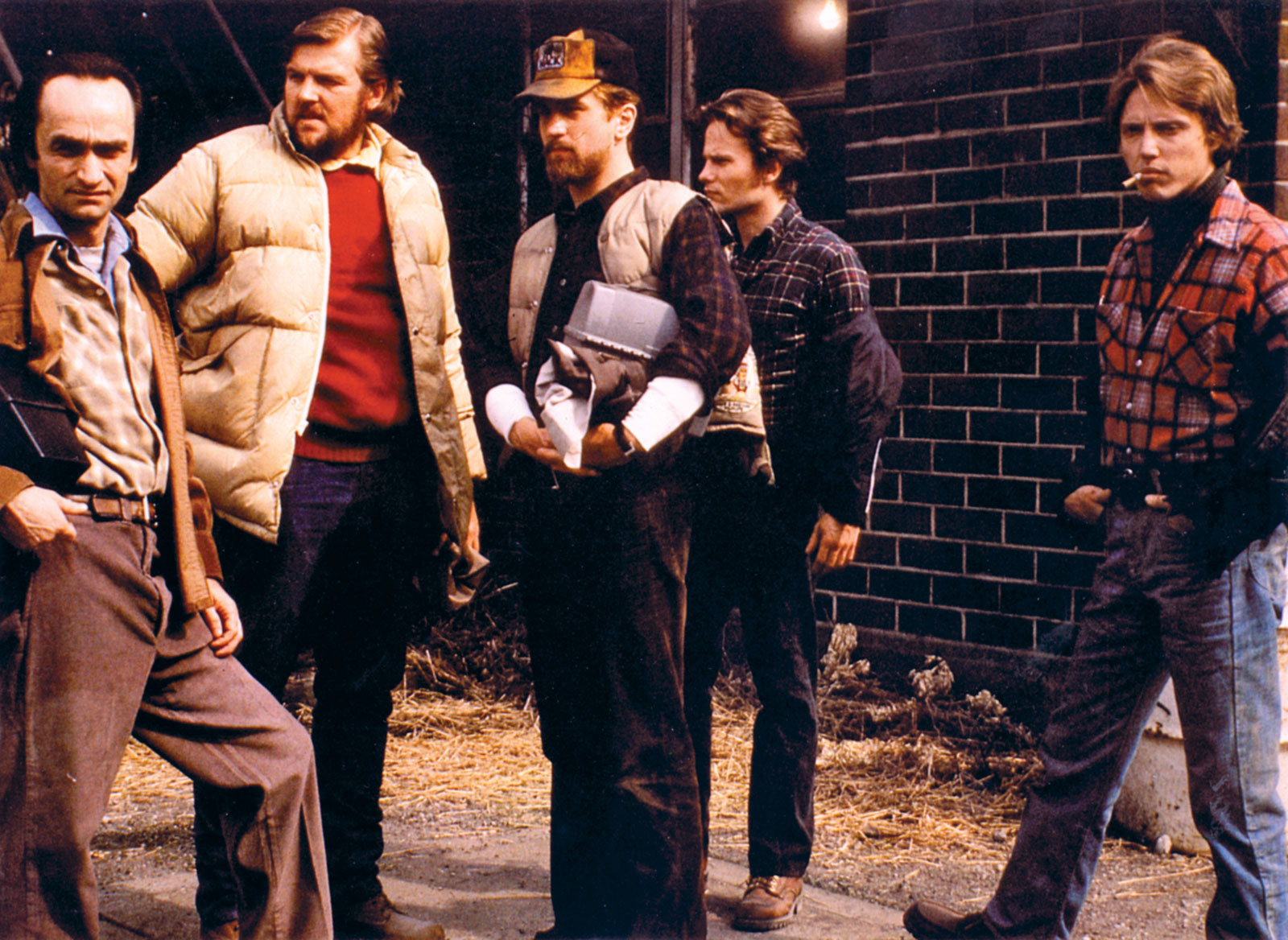 friend and comrade, Michael Vronsky desperately attempts to bring him back with a mantra for hunting wild game in Western PA’s Allegheny Mountains: “one shot.” The dark irony here is that they both hail from the peaceful Russian-American community in Clairton, whose blue collar populace was the backbone of the local steel mill workforce, and whose gunplay was usually confined to deer – not people. The U.S. Steel blast furnace in Cleveland, Ohio doubled for the Clairton mill interiors, but it’s the streets of Woodstock, Illinois standing in for Punxsutawney, PA in Groundhog Day. In fact, many visitors may be confused upon arrival at the difference, but not Phil Connors – the jaded Pittsburgh weatherman who’s forced to spend years reliving his first full day in this perky little hamlet. And why are the locals so happy? Well, if it’s something in the water, then they’re drinking something very different over in Evans City – where a
friend and comrade, Michael Vronsky desperately attempts to bring him back with a mantra for hunting wild game in Western PA’s Allegheny Mountains: “one shot.” The dark irony here is that they both hail from the peaceful Russian-American community in Clairton, whose blue collar populace was the backbone of the local steel mill workforce, and whose gunplay was usually confined to deer – not people. The U.S. Steel blast furnace in Cleveland, Ohio doubled for the Clairton mill interiors, but it’s the streets of Woodstock, Illinois standing in for Punxsutawney, PA in Groundhog Day. In fact, many visitors may be confused upon arrival at the difference, but not Phil Connors – the jaded Pittsburgh weatherman who’s forced to spend years reliving his first full day in this perky little hamlet. And why are the locals so happy? Well, if it’s something in the water, then they’re drinking something very different over in Evans City – where a 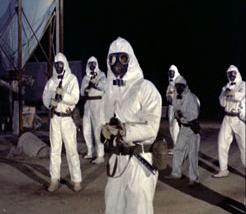 plane crash unleashes a weaponized virus into the water supply in George Romero’s 1973 film, The Crazies. The end result is widespread homicidal behavior, and an unwelcome T zone visit from another kind of Washington tourist – soldiers in biohazard suits blasting away at anyone who tries to leave town. Real-world concerns over the safety of what rural Pennsylvanians are drinking persist. Back in PA coal country, the poisonous effects on local lakes, streams and water tables from hydro-fracture gas mining in the Marcellus Shale Formation is big news. On a less-destructive front, though, expect filmmakers to continue mining rural Pennsylvania as a valuable film locale.
plane crash unleashes a weaponized virus into the water supply in George Romero’s 1973 film, The Crazies. The end result is widespread homicidal behavior, and an unwelcome T zone visit from another kind of Washington tourist – soldiers in biohazard suits blasting away at anyone who tries to leave town. Real-world concerns over the safety of what rural Pennsylvanians are drinking persist. Back in PA coal country, the poisonous effects on local lakes, streams and water tables from hydro-fracture gas mining in the Marcellus Shale Formation is big news. On a less-destructive front, though, expect filmmakers to continue mining rural Pennsylvania as a valuable film locale.
3 minutes read
The T Zone, Pennsylvania
3 minutes read